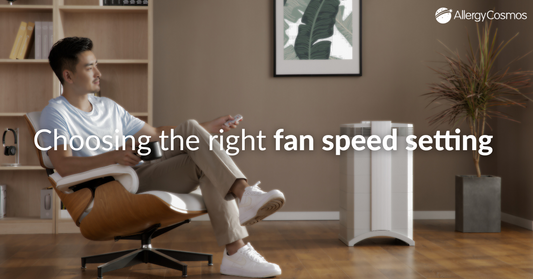Research carried out by Dr Bill Wolverton at NASA's Stennis Space Center has investigated houseplants as air cleaners and how plants are able to remove indoor air pollution. The goal of Dr Wolverton's decade long research was to find out how plants can help humans spend long periods of time in outer space. Dr Wolverton was especially interested in preventing the inhabitants of the Skylab space station from getting sick due to the off-gassing of chemicals from building materials. Formaldehyde, benzene, and trichloroethylene are just some of the potential carcinogens and irritants that building materials produced as a by-product. These irritants can quickly accumulate and create a toxic indoor environment, leading people to suffer from a variety of different illnesses.
Dr Wolverton's research showed that some plants emit water vapour that pulls contaminated air towards their roots. Leaves, roots and bacteria in the potting compost can then work together, through a series of complex biochemical mechanisms, to pull pollution out of the air. Some of the plants that are better at removing pollution from the air than others are:
- Mother-in-law’s tongue. A semi-succulent with sharp, thin leaves. Tough survives neglect and does not care for over-watering.
- Janet Craig. Very easy to look after. Grows large so you could put it on the floor. Does not like too much water and survives low light. Related species are Marginata and cane plants (look for species starting with Dracaena).
- Peace Lily. Likes humid conditions, away from the sun. They will flower if you keep them nearer to a window.
- Bromeliads. These plants have lovely striking flowers and can last for months. They will require regular watering. Good for warm rooms.
- Zanzibar gem. Almost impossible to kill off - can survive with little water and little light.
- Yukka. A long-lived, slow-growing plant which does not like too much water and needs to be near a good light source.
Dr Wolverton found that philodendron, spider plant and golden pothos (Devil’s ivy) were best at removing formaldehyde, which is very common and is a particularly troublesome indoor pollutant. Flowering plants gerbera daisy and chrysanthemum also remove small amounts of pollution - good if you like a splash of colour.
It is important, however, to point out that it is not realistic to significantly reduce the levels of general air pollution in your home through the use of household plants. It would require an entire building filled with plants to improve the air quality in a small flat. The reason for this is that plants do not process air fast enough to clean an indoor environment. So if you are serious about improving indoor air quality you should visit our best air purifier learn page. For the best result, consider using an air purifier with a leakage-free HEPA filter.
The US Environmental Protection Agency (EPA) recommends considering the MERV rating of an air cleaner. MERV stands for Minimum Efficiency Reporting Value, which is the ability of the purifier to clean the air. A good HEPA filter should have a MERV value between 17 and 19 and, if it does, you can be sure that it will be between 99.97 and 99.999% efficient in removing particles of 0.3 microns diameter. Remember, too, that HEPA, as the name suggests, filters particles out of the air, but not vapour or gas molecules. So you might need to add an activated granular carbon filter to deal with gaseous pollution. Also, bear in mind that HEPA-type or HEPA-like filters are not the same as HEPA filters (which must meet certain standards to qualify as a proper HEPA filter). The term HEPA-type can mean almost anything, but some air purifiers with HEPA-like filters can be a good alternative if you are looking for a unit with a high air flow rate and very quiet operation. The drawback is that the filtration efficiency can be significantly less.




